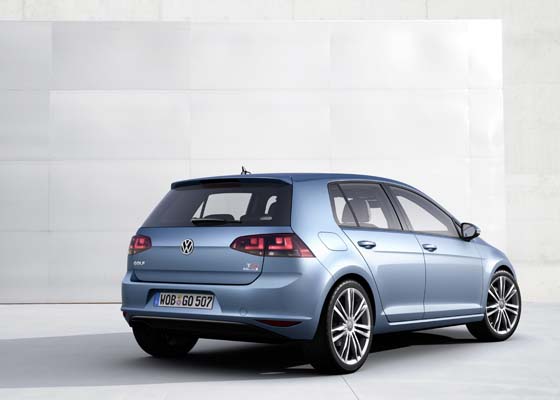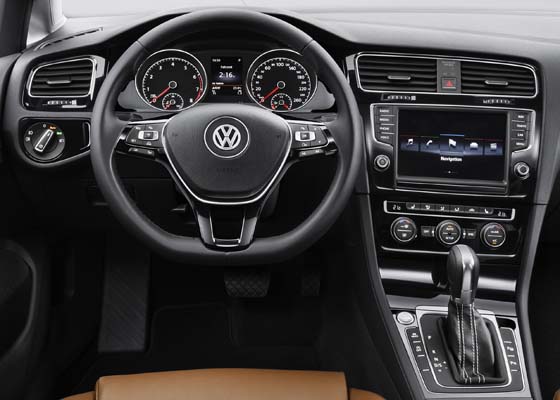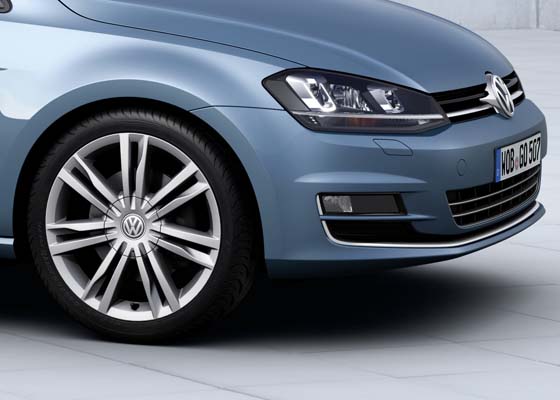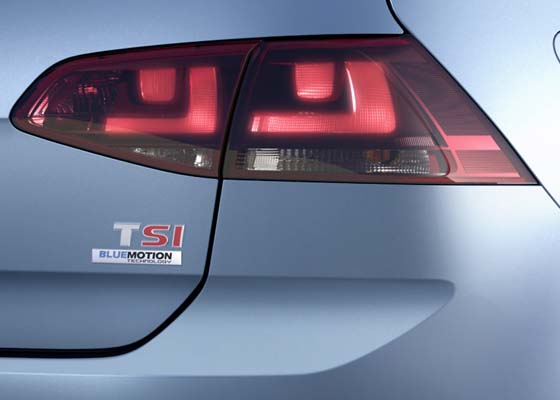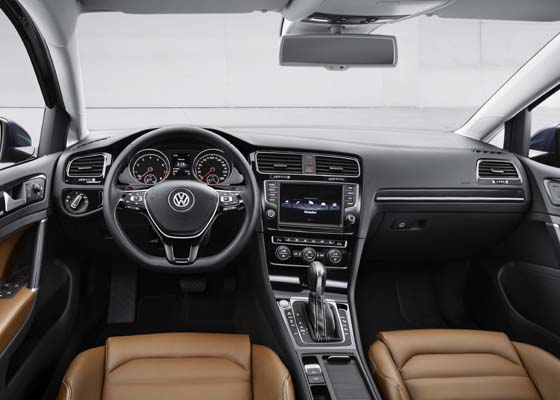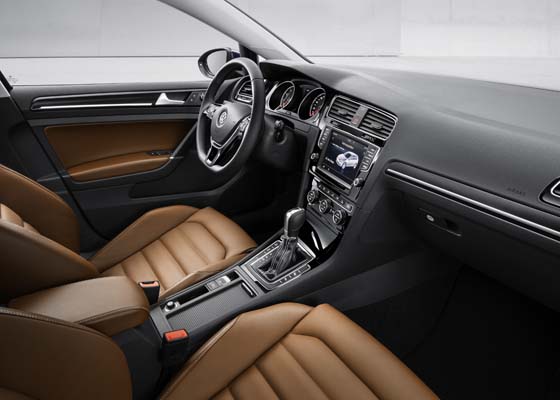The car you see below will probably be the biggest star of the 2012 Paris Motor Show – it’s the all-new seventh generation of the Volkswagen Golf.

The seventh generation of the Volkswagen Golf is almost with us
Why is it so important? Because it’s Volkswagen’s biggest seller and also the car that is frequently used as the yardstick in the mid-sized C sector. The likes of Ford and Vauxhall will be nervously eyeing the newcomer and it could cause problems within the VAG group as it goes up against the new SEAT Leon and Skoda Rapid. Even Audi should be worried – the Golf is a cheaper alternative to the A3 that, if quality is high enough, could tempt people away from the more expensive marque.
What’s Different About This Golf?
Where the Mk6 Golf was a warmed-over Mk5, this Mk7 Golf is a completely new design. It is built on the same MQB platform that underpins the latest Audi A3 and the upcoming SEAT Leon, also due to make its public debut at Paris.
The MQB platform brings with it a range of new engines and plenty of options for new electronic systems for improved multimedia and navigation systems. It also allows the Golf to expand in both length and width but with a lower roofline. The body increases by 56mm with a 59mm increase in wheelbase, the width goes up by 13mm and the roof drops by 28mm. The result is an increase in both cabin and boot space.
You can immediately tell the new car is a Golf. There are no major changes and the silhouette remains much the same, with the Golf’s trademark chunky C-pillar carried over. There are changes to the lights, which are now wider and flatter at the rear, but otherwise we’re looking at minor tweaks to a successful recipe.

Flatter, wider LED lights at rear
Will It Be Quick?
Don’t expect to see much in the way of quick Golfs at launch. There are three engines available at launch, starting with a 1.2-litre TSI petrol that produces 84 bhp and a 1.4 TSI that produces 138bhp and makes use of cylinder deactivation technology to improve economy. The quickest Golfs will be powered by a 148bhp version of the 2.0-litre turbodiesel.
The new model uses higher strength steel in its construction, allowing Volkswagen to use thinner panels and reduce the weight of the body by 25kg. Further reductions in component weight mean that this Golf weighs up to 100kg less than the old model, wiping out the middle-aged spread that has afflicted the Golf over the last two generations.
The good news is that both a GTI and a GTD model are in the pipeline. Expect the GTI to get a power boost to around 220bhp but don’t go thinking it will be chasing other hot hatches such as the 276bhp Astra VXR. That will be the job of the Golf R, but we’ll have to wait and see if the R sticks to the same 2.0-turbo and all-wheel drive format.
The Bluemotion TDI model will return to the role of eco-warrior with CO2 emissions of just 85 g/km and fuel economy of 88.3mpg, and there’s an all-electric Golf due soon. The rest of the range sees an economy increase of over 20 percent with CO2 cuts of around 13 percent.
Anything Exciting Changing In The Cabin?
There is the usual mixture of high quality materials and sensible ergonomics where function rules over form, but with a twist. Rather than stick to the flat dashboard of previous models Volkswagen have decided to make the Golf’s cabin more driver oriented, with the centre console angled slightly toward the driver.

The Golf’s centre console is now angled slightly towards the driver
New options include a touchscreen infotainment system that starts with a 5.8-inch screen on low and the mid-range models while top-spec models get a huge 8-inch screen. Both screens show the audio and heater controls, but the larger screen can also display new 3D navigation. Bluetooth, SD card, USB and auxiliary connections allow all manner of media devices to be plugged into the Golf.
If, like me, you have a dislike of electronic handbrakes then you won’t be pleased to hear that the Golf is getting one. Other electronic aids will include adaptive cruise control, city emergency braking (as seen on the Up), Lane Assist and Park Assist. There will also be Dynamic Chassis Control to allow drivers to switch between comfort and sport settings, and the final touch will be a variable ratio steering setup. It will be interesting to see if that brings any extra feel to the Golf’s helm or eliminates it completely.
As well as new steering the Golf range receives a new locking differential on the front axle. Could this transform lesser models into a keen driver’s tool?
How Much Will It Cost?
At the moment we don’t know for sure, but don’t expect to get much change out of £15,000 for the entry level models. The five-door model is already in production and order books open in October, ready for deliveries to start in January 2013.

The seventh generation Golf is the latest in a long bloodline

